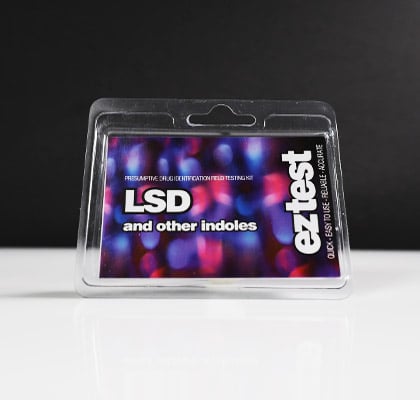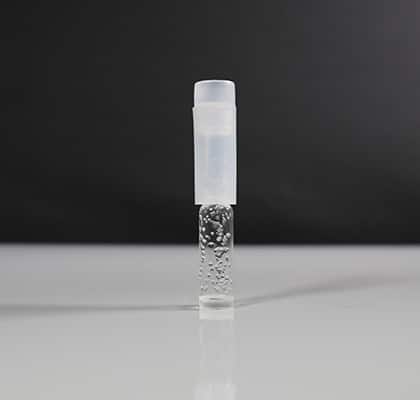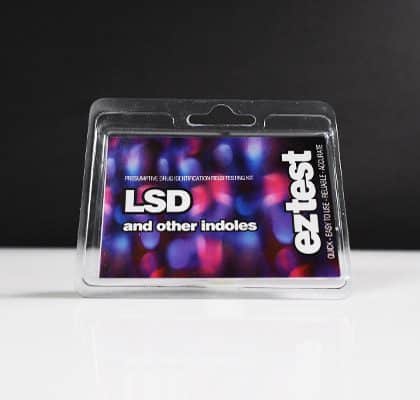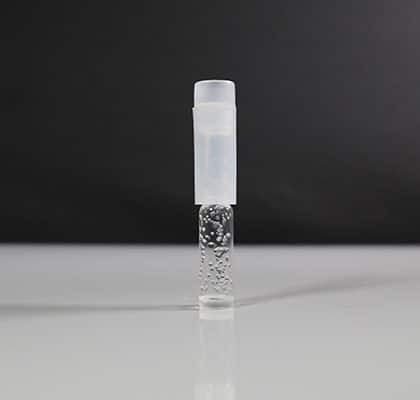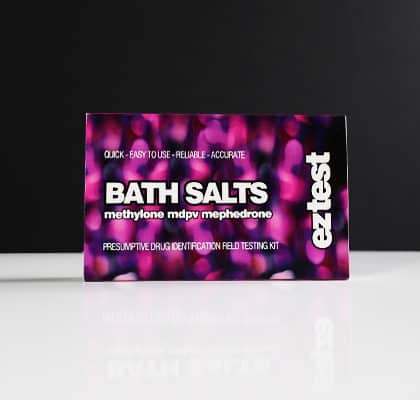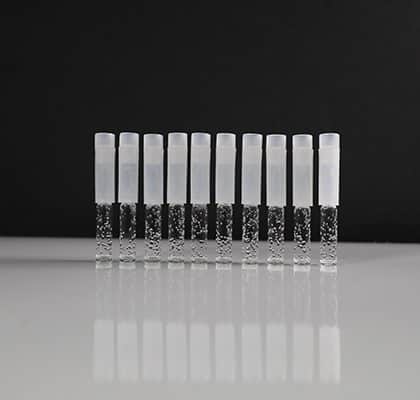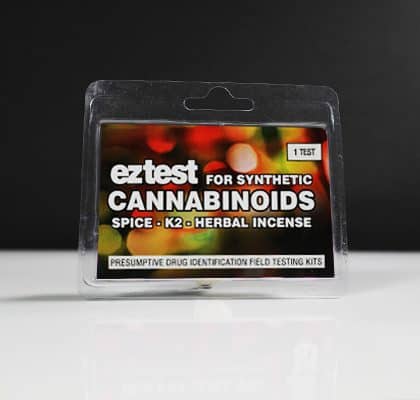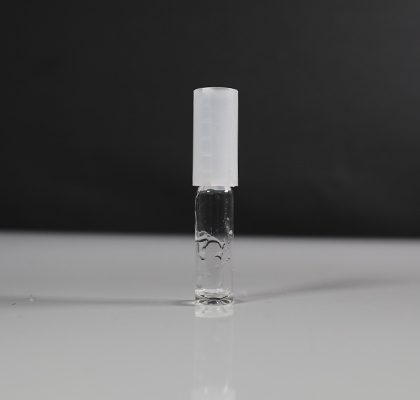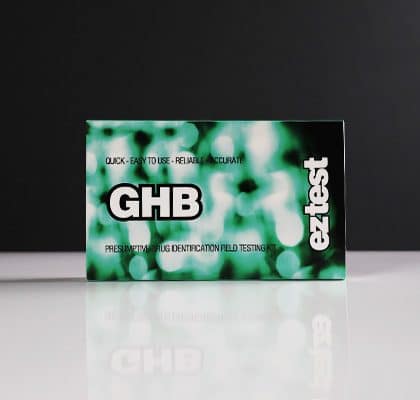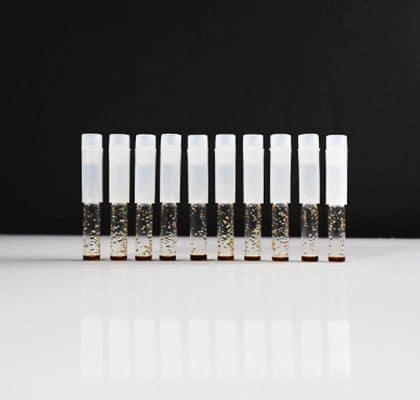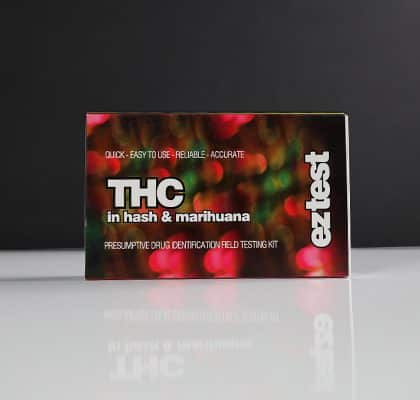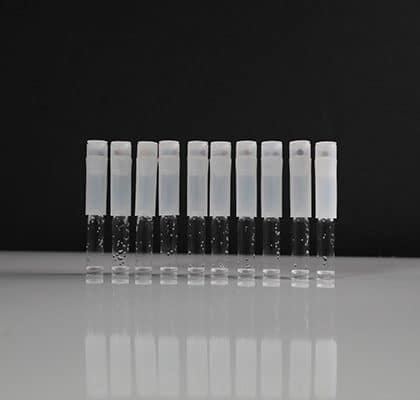-
×
 Kanna Extract 10x
1 × €15,00
Kanna Extract 10x
1 × €15,00
LSD EZ-Test – One Pack
€4,00 incl. vat
Safeguard your experiences with LSD EZ-Test, a reliable single-use kit designed for detecting LSD and similar indoles in samples. This harm reduction tool uses a simple chemical reaction to reveal potential contaminants, promoting informed and safer choices without lab equipment. Contains 1 single test.
What is LSD EZ-Test
LSD EZ-Test is a compact, user-friendly testing kit engineered to identify the presence of LSD and other indole compounds, such as DMT, 5-MeO-DMT, psilocybin, and psilocin, in suspected samples. By employing a chemical reagent embedded in silica gel within a glass ampoule, it triggers a visible color change when a substance reacts, allowing quick visual confirmation against an included chart. This makes it an essential tool in a market rife with adulterants like NBOMe variants or psychedelic amphetamines, which can pose serious health risks including nausea, anxiety, or even fatality.
Users value its role in harm reduction, as it provides an immediate indication rather than absolute purity analysis, encouraging further professional testing if doubts persist. The single-test format ensures affordability and portability, ideal for personal use at events or home. Unlike comprehensive lab assays, this kit focuses on presumptive detection, helping avoid unintended exposure to harmful fakes.
Its design prioritizes simplicity, requiring no technical expertise, while emphasizing safety through clear instructions. Many turn to it for peace of mind, fostering responsible practices in recreational contexts without endorsing substance use.
History of LSD EZ-Test
The foundation of LSD EZ-Test lies in the discovery of LSD by Albert Hofmann in 1943, which sparked widespread interest in psychedelics but also led to a black market flooded with impurities by the 1960s. Early harm reduction efforts emerged during the counterculture era, with basic field tests using household chemicals to spot fakes, though unreliable. The 1970s saw forensic advancements, adapting Ehrlich’s reagent—developed in the 1880s for medical indole detection—to drug analysis amid rising concerns over street drug safety.
By the 1990s, organizations like DanceSafe formalized reagent kits for raves, addressing adulterants in ecstasy and LSD. EZ Test brands appeared in Europe around the early 2000s, specializing in user-friendly ampoule-based systems for indoles, building on improved silica gel absorption for stability. These kits gained traction with festival-goers and advocacy groups pushing for decriminalization and education.
Over the decades, refinements incorporated color charts for broader indole coverage, responding to evolving synthetics like 5-MeO variants. Today, LSD EZ-Test embodies this progression, blending historical chemistry with modern accessibility to support global harm reduction initiatives.
Its legacy highlights a shift from prohibition to pragmatic safety, empowering users worldwide against market dangers.
How to Use LSD EZ-Test
To employ LSD EZ-Test effectively, begin by preparing a small sample from your substance, such as a fragment of blotter or crystal, ensuring minimal contact to avoid risks. Carefully break the glass ampoule as instructed—without force—to expose the reagent-soaked silica gel inside. Insert the sample directly into the ampoule, then seal it with the provided cap and shake gently to mix.
Allow up to three minutes for the reaction, observing any color development; compare it to the package’s chart—a purple tint suggests indoles like LSD, while no change indicates absence. For blotters, expect subtler hues due to lower concentrations, but patience yields results.
Post-testing, dispose of the ampoule and residue securely, perhaps in a sealed bag, to prevent environmental or accidental harm. If the kit arrives damaged, refrain from use and replace it. This process is straightforward, taking mere minutes, and fits discreetly into various settings.
Always follow the enclosed guidelines meticulously, as the test offers only an indication, not definitive proof. For deeper analysis, consult laboratories. This method promotes cautious, informed decision-making in personal scenarios.

Ingredients of LSD EZ-Test
LSD EZ-Test comprises a specialized chemical reagent, primarily a modified Ehrlich’s formula, absorbed into inert silica gel for controlled reactions. This gel, housed in a fragile glass ampoule, stabilizes the active components, preventing degradation until activation. The reagent typically includes p-dimethylaminobenzaldehyde (DMAB) in an acidic solution, such as hydrochloric acid, which interacts with indoles to produce distinct color shifts.
No additional fillers or dyes compromise the purity, ensuring the focus remains on accurate detection without interference. The silica acts as a neutral carrier, enhancing safety by minimizing direct handling of liquids. Packaging elements, like the color chart and instructions, support the core ingredients but aren’t reactive.
This composition draws from established forensic chemistry, optimized for home use with minimal volume in a single-test setup. Users benefit from its non-toxic profile when handled properly, though it’s not ingestible.
The blend’s simplicity underscores reliability, targeting specific molecular bonds in psychedelics while ignoring common adulterants. Transparency in formulation reassures those prioritizing harm reduction tools.
Warning After testing, please remember to dispose of the ampoule and sample safely. The EZ testing kits are purely a guide to help analyze a substance. It is advised not to touch any substance and extensive laboratory testing of samples is recommended for more detailed results. The EZ-Test can only give an indication of the substance in a sample. It does not provide a 100% guarantee. If you still have doubts about the ingredients of your product, have your product tested by an official agency. No rights or claims can be derived from using the EZ-Test. Always read the instructions; don’t use force to open the ampoule.
Do you ship to my country?
We ship to most EU countries. You can find these in the table below. We ship all our EU packages with DHL, DPD or PostNL depending on the area. This way we can deliver the best service possible. You will always receive a track and trace code to track your package from door to door.
| Country | Delivery | Costs | Free shipping |
|---|---|---|---|
| Austria | 2 - 3 | €11,95 | €125,- |
| Belgium | 1 - 2 | €7,95 | €125,- |
| Bulgaria | 6 - 8 | €21,95 | €125,- |
| Croatia | 3 - 5 | €17,95 | €125,- |
| Czech Republic | 2 - 4 | €13,95 | €125,- |
| Estonia | 4 - 6 | €19,95 | €125,- |
| France | 2 - 3 | €10,95 | €125,- |
| Germany | 1 - 3 | €7,95 | €125,- |
| Greece | 6 - 8 | €21,95 | €125,- |
| Ireland | 3 - 4 | €16,95 | €125,- |
| Italy | 2 - 4 | €18,95 | €125,- |
| Latvia | 3 - 5 | €15,95 | €125,- |
| Lithuania | 3 - 5 | €22,95 | €125,- |
| Luxembourg | 1 - 2 | €11,95 | €125,- |
| Netherlands | 1 - 2 | €6,95 | €125,- |
| Poland | 2 - 3 | €14,95 | €125,- |
| Portugal | 3 - 4 | €20,95 | €125,- |
| Romania | 3 - 5 | €17,95 | €125,- |
| Slovakia | 3 - 5 | €17,95 | €125,- |
| Slovenia | 2 - 3 | €17,95 | €125,- |
| Spain | 2 - 3 | €14,95 | €125,- |
* Difficult to reach areas like Islands or other remote regions will cost around €20,- more due to additional carrier fees.
Note: We try to ship all orders within 1 working day, all delivery times are estimated and can vary because of traffic and holidays.
Related products
€25,00 incl. vat
€4,00 incl. vat
€25,00 incl. vat
€25,00 incl. vat

